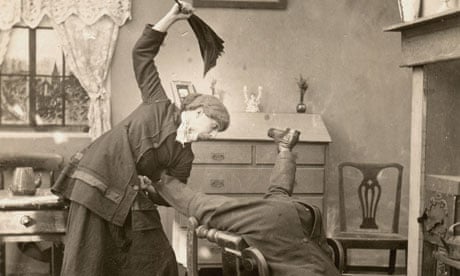The bestselling Fifty Shades of Grey trilogy by EL James has reportedly already sold up to 20m copies worldwide. Having read the three novels in one sitting, I very much doubt it is the sex that did it. I found it boring, repetitive, and leads women to aspire to undesirable – and frankly unattainable – goals, such as simultaneous orgasm, which occurs between the protagonists most of the time.
But, most annoyingly, the story demonises BDSM – the term for the erotic style comprising bondage, domination, and sado-masochism – and those who enjoy it. The male protagonist, Christian Grey, is portrayed as a cold-hearted sexual predator with a dungeon (that word has been wisely swapped for "playroom"), full of scary sex toys. Worst of all is the implication that his particular erotic style has developed because he is psychologically "sick".
Frankly, in BDSM terms, Grey is a lightweight. He eschews many fairly standard interests, although he is an expert at the "mind-fuck". Even novices, however, would know that his use of cable ties is a very bad idea (to avoid nerve-damage and scarring, soft, thick rope is de rigueur).
Grey's lack of competency in his chosen erotic arena is most apparent, though, in the way he fails to assess his potential new submissive's naivety. Experienced BDSM practitioners are acutely aware of the gulf between cognoscenti and others, and would not dream of terrifying a novice by bringing up such advanced techniques as fire, electricity and gynaecological play.
Ten years ago, I carried out an extensive psychological study of people in the BDSM community – the largest empirical study ever done at the time – to examine their psychological attributes and determine if there was any justification for the notion, commonly held, even within my field, that they were all psychologically disturbed. After giving each of the 132 participants four hours of psychological tests, as well as a face-to-face interview, I found that, in fact, the group was generally not mentally unhealthy, and the instances of early abuse that had long been associated with the adult practice of BDSM were present in just a few.
When I presented my findings in 2003 at the annual conference of the American Association of Sex Educators, Counsellors and Therapists (the full study was published in the Journal of Psychology and Human Sexuality in 2006), the jury was still out as to whether BDSM and psychopathology went hand in hand. But since then, it has been firmly established – through the work of Peggy Kleinplatz, Charles Moser and others – that BDSM, played in a safe and consensual manner, is not proof of mental or physical illness, essential badness or emotional damage from trauma or abusive parenting, and that people cannot – and should not – be treated to cure it.
All the work that has been done to establish that BDSM is not a pathological symptom, but one of a wide range of normative human erotic interests, is in danger of being undermined by the success of Fifty Shades. Let's hope we do not return to the days when people were discriminated against – losing children, property, jobs – for their interest in BDSM. Remember, Fifty Shades is just another bodice-ripper. With cable ties.




Comments (…)
Sign in or create your Guardian account to join the discussion